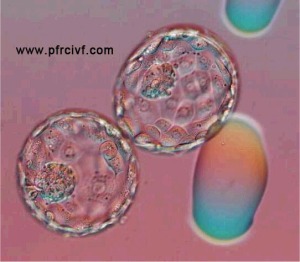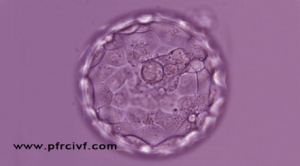The highly motile and morphologically normal sperm are harvested by
density gradient separation technique from the semen which is usually a
mixture of pus cells and abnormal sperm. The separated good sperm is
enriched with special medium using highly sterile technique. We also
prepare sperm sample for other clinics so that they can perform IUI
independently at their centre and improve the success rate of
intrauterine insemination. Woman with ovulatory dysfunction, treated
endometriosis with patent tubes, luteal phase defects, cervical factor
incompatibility, polycystic ovarian disease , can try IUI first before
trying more advanced techniques of Assisted Reproduction. Men with
slightly compromised semen parameters can also benefit from IUI. A cozy
room specially designed for semen collection is available for the male
partner. The room provides absolute privacy. The cumulative pregnancy
rates after 6 cycle of IUI is about 70 - 80%.
Intrauterine insemination (IUI) - chance of success:
It is difficult to assess success rates for intrauterine insemination (IUI) because success depends upon the cause of infertility and whether fertility drugs are used to stimulate egg production.
Discuss with your clinician whether fertility drugs are suitable for you. Usually, it would be reasonable to try three to six IUI treatments. Your clinician will advise what is best for you.
• 15.8% (237/1497) for women aged under 35
• 11.0% (154/1394) for women aged between 35-39
• 4.7% (23/492) for women aged between 40-42
• 1.2% (2/172) for women aged between 43-44
• ** (0/46) for women aged over 44
Figures given in brackets are (IUI cycles resulting in a live birth / IUI cycles started).
If IUI fails after several attempts, depending on your age, your doctor may suggest you try another treatment such as in vitro fertilisation (IVF).
Intrauterine insemination (IUI) - chance of success:
It is difficult to assess success rates for intrauterine insemination (IUI) because success depends upon the cause of infertility and whether fertility drugs are used to stimulate egg production.
Discuss with your clinician whether fertility drugs are suitable for you. Usually, it would be reasonable to try three to six IUI treatments. Your clinician will advise what is best for you.
• 15.8% (237/1497) for women aged under 35
• 11.0% (154/1394) for women aged between 35-39
• 4.7% (23/492) for women aged between 40-42
• 1.2% (2/172) for women aged between 43-44
• ** (0/46) for women aged over 44
Figures given in brackets are (IUI cycles resulting in a live birth / IUI cycles started).
If IUI fails after several attempts, depending on your age, your doctor may suggest you try another treatment such as in vitro fertilisation (IVF).





 Age less than 27
Age less than 27






